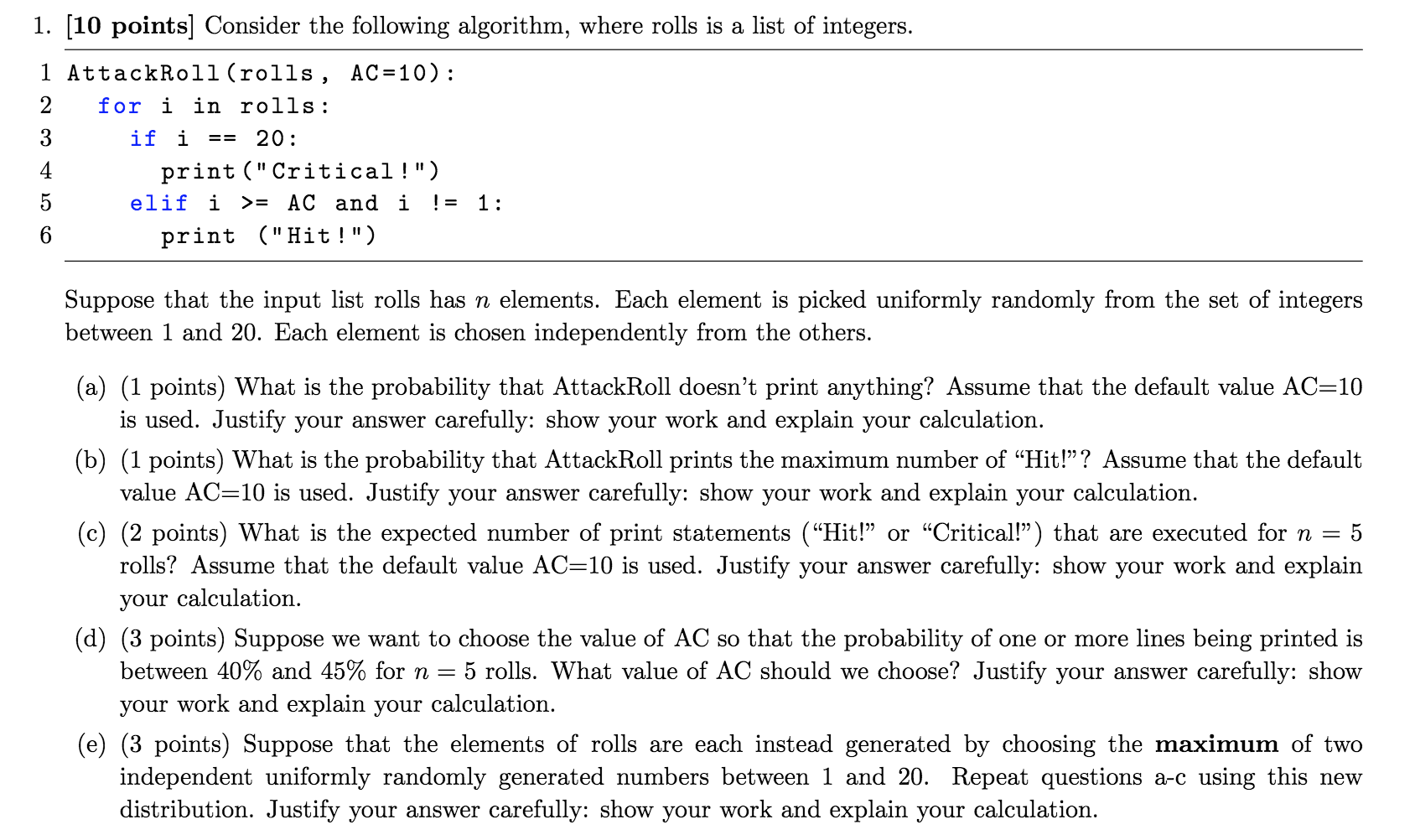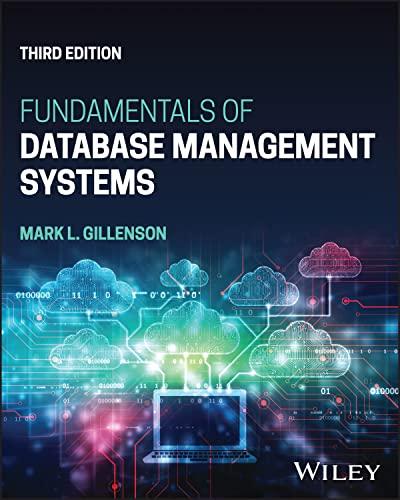 please answer c, d and e
please answer c, d and e
1. [10 points] Consider the following algorithm, where rolls is a list of integers. 1 AttackRoll (rolls, AC=10): 2 for i in rolls: 3 if i 20: 4 print ("Critical!") 5 elif i >= AC and i ! = 1 : print ("Hit!") == Suppose that the input list rolls has n elements. Each element is picked uniformly randomly from the set of integers between 1 and 20. Each element is chosen independently from the others. (a) (1 points) What is the probability that AttackRoll doesn't print anything? Assume that the default value AC=10 is used. Justify your answer carefully: show your work and explain your calculation. (b) (1 points) What is the probability that AttackRoll prints the maximum number of "Hit!? Assume that the default value AC=10 is used. Justify your answer carefully: show your work and explain your calculation. (c) (2 points) What is the expected number of print statements (Hit! or Critical!") that are executed for n 5 rolls? Assume that the default value AC=10 is used. Justify your answer carefully: show your work and explain your calculation. (d) (3 points) Suppose we want to choose the value of AC so that the probability of one or more lines being printed is between 40% and 45% for n = 5 rolls. What value of AC should we choose? Justify your answer carefully: show your work and explain your calculation. (e) (3 points) Suppose that the elements of rolls are each instead generated by choosing the maximum of two independent uniformly randomly generated numbers between 1 and 20. Repeat questions a-c using this new distribution. Justify your answer carefully: show your work and explain your calculation. 1. [10 points] Consider the following algorithm, where rolls is a list of integers. 1 AttackRoll (rolls, AC=10): 2 for i in rolls: 3 if i 20: 4 print ("Critical!") 5 elif i >= AC and i ! = 1 : print ("Hit!") == Suppose that the input list rolls has n elements. Each element is picked uniformly randomly from the set of integers between 1 and 20. Each element is chosen independently from the others. (a) (1 points) What is the probability that AttackRoll doesn't print anything? Assume that the default value AC=10 is used. Justify your answer carefully: show your work and explain your calculation. (b) (1 points) What is the probability that AttackRoll prints the maximum number of "Hit!? Assume that the default value AC=10 is used. Justify your answer carefully: show your work and explain your calculation. (c) (2 points) What is the expected number of print statements (Hit! or Critical!") that are executed for n 5 rolls? Assume that the default value AC=10 is used. Justify your answer carefully: show your work and explain your calculation. (d) (3 points) Suppose we want to choose the value of AC so that the probability of one or more lines being printed is between 40% and 45% for n = 5 rolls. What value of AC should we choose? Justify your answer carefully: show your work and explain your calculation. (e) (3 points) Suppose that the elements of rolls are each instead generated by choosing the maximum of two independent uniformly randomly generated numbers between 1 and 20. Repeat questions a-c using this new distribution. Justify your answer carefully: show your work and explain your calculation
 please answer c, d and e
please answer c, d and e





